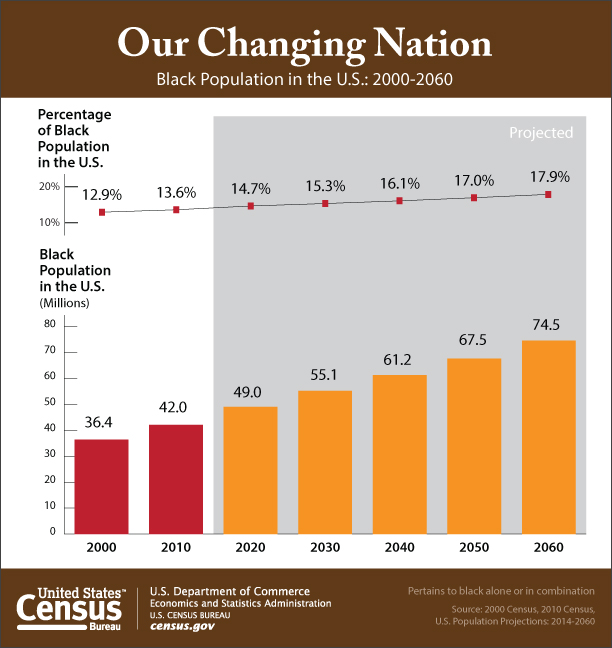Physical Address
304 North Cardinal St.
Dorchester Center, MA 02124
Physical Address
304 North Cardinal St.
Dorchester Center, MA 02124

Contents
As of 2024, the United States has a total population of approximately 334.9 million people. Among this population, the Black or African American alone group constitutes about 13.6%. This makes Black Americans the second-largest minority group in the country, following the Hispanic or Latino population. The distribution of the Black population is not uniform across the states, with the highest concentrations found in states like Alabama, Arkansas, Delaware, Georgia, Louisiana, Maryland, Mississippi, North Carolina, South Carolina, and Virginia.
When it comes to educational attainment, in 2021, around 87.9% of non-Hispanic Black individuals aged 25 and over had earned at least a high school diploma, compared to 93.5% of non-Hispanic whites. However, only 24.7% of non-Hispanic Blacks held a bachelor’s degree or higher, in contrast to 38.3% of non-Hispanic whites. The median household income for non-Hispanic Black households was $48,297, significantly lower than the $77,999 reported for non-Hispanic white households in 2021.
The economic disparities between non-Hispanic Blacks and whites are evident in the poverty rates, with 19.5% of non-Hispanic Blacks living below the poverty level compared to 10.0% of non-Hispanic whites. Unemployment rates also reflect these disparities, with 9.9% of non-Hispanic Blacks aged 25 and over unemployed in 2020, compared to 6.4% of non-Hispanic whites. In terms of health, the life expectancies for Black Americans are lower than those for non-Hispanic whites, with Black individuals projected to live 70.8 years on average, compared to 76.4 years for whites.
The Black population in the US has been steadily growing, reaching an estimated 47.9 million in 2022, marking a 32% increase since 2000. Within this population, there are various subgroups, including single-race non-Hispanic Blacks, multiracial non-Hispanic Blacks, and Black Hispanics. The single-race non-Hispanic Black population constitutes the largest subgroup, with 83% of the total Black population. On the other hand, multiracial non-Hispanic Blacks and Black Hispanics make up 11% and 6% of the Black population, respectively.
Black Americans have a relatively young population, with a median age of 32.1 years in 2022, compared to the overall median age of 38.0 years in the US. Fertility rates among Black females aged 15 to 44 were reported at 6.1% in 2022. The single-race non-Hispanic Black population has a median age of 34.9 years, with 41% of individuals under 30 years old. The multiracial non-Hispanic Black population is even younger, with a median age of 19.5 years and 49% below the age of 20.
Understanding the demographic, economic, and health characteristics of the Black population in the US is crucial for addressing disparities and promoting equity. While progress has been made in certain areas, such as educational attainment, significant gaps persist in income, employment, and health outcomes. By recognizing and addressing these disparities, society can work towards a more inclusive and equitable future for all its members.